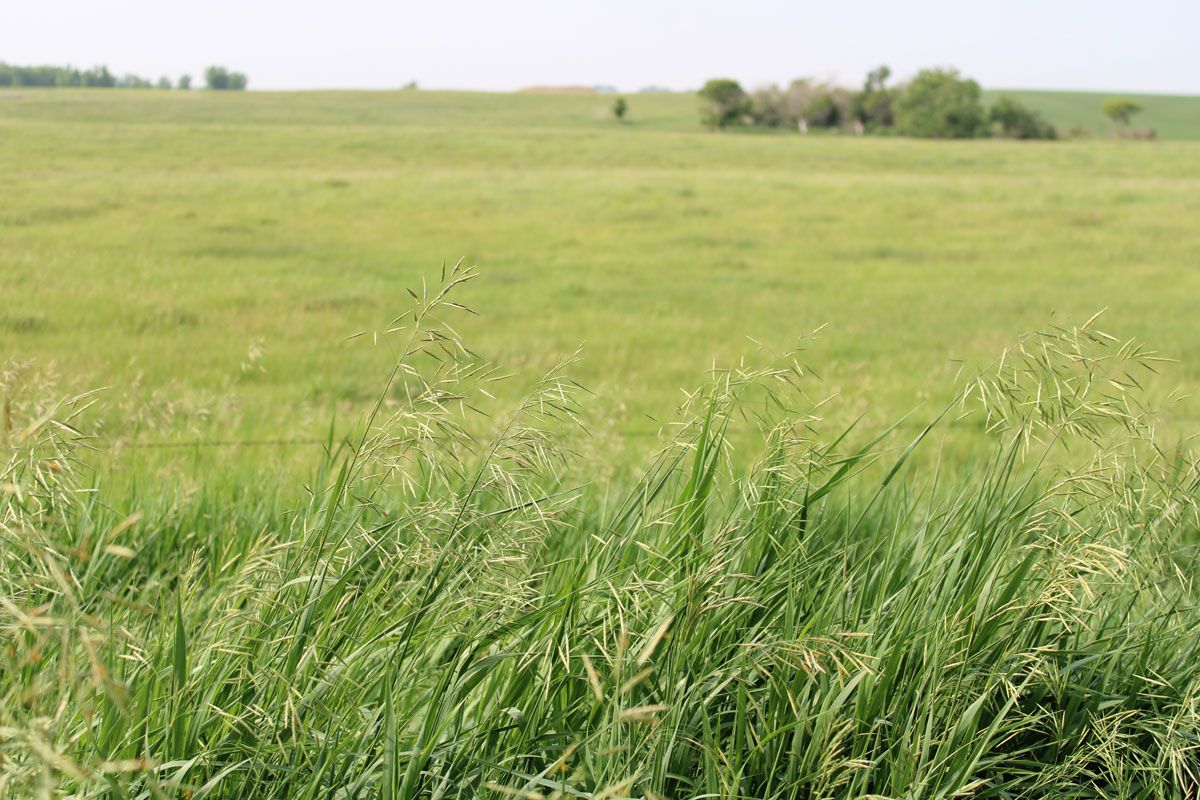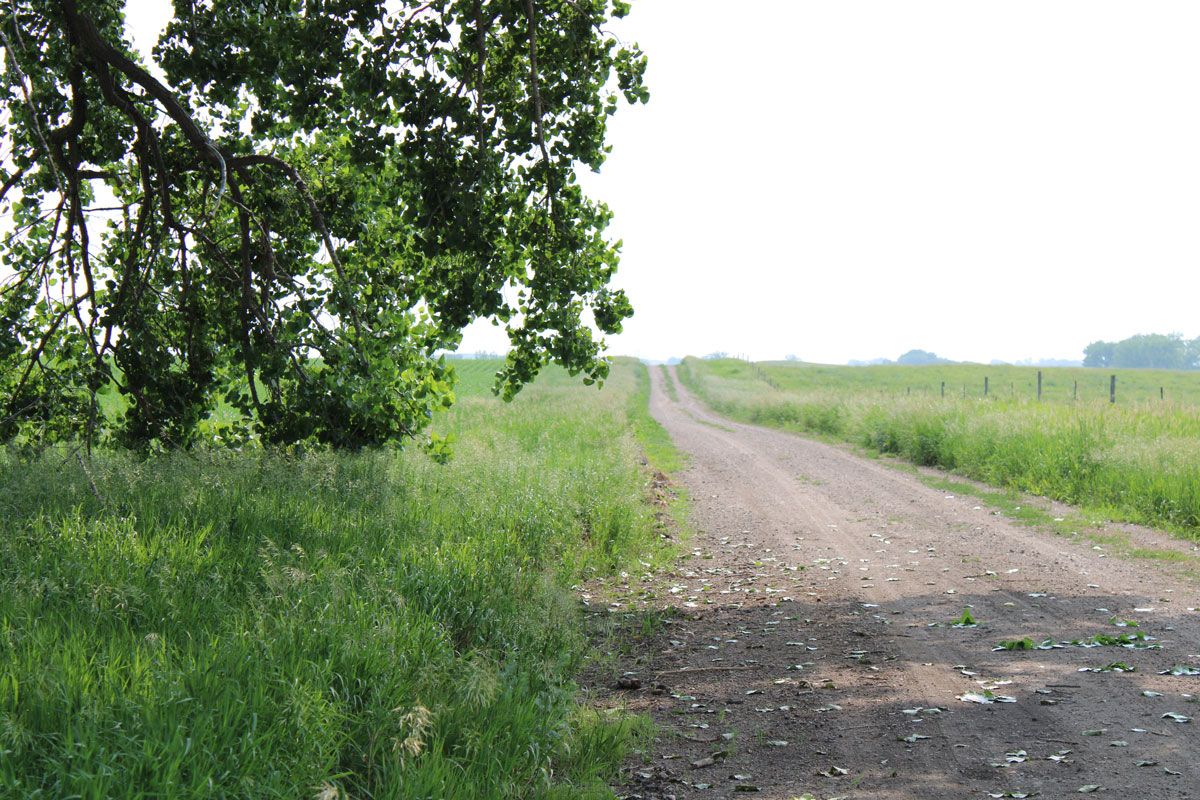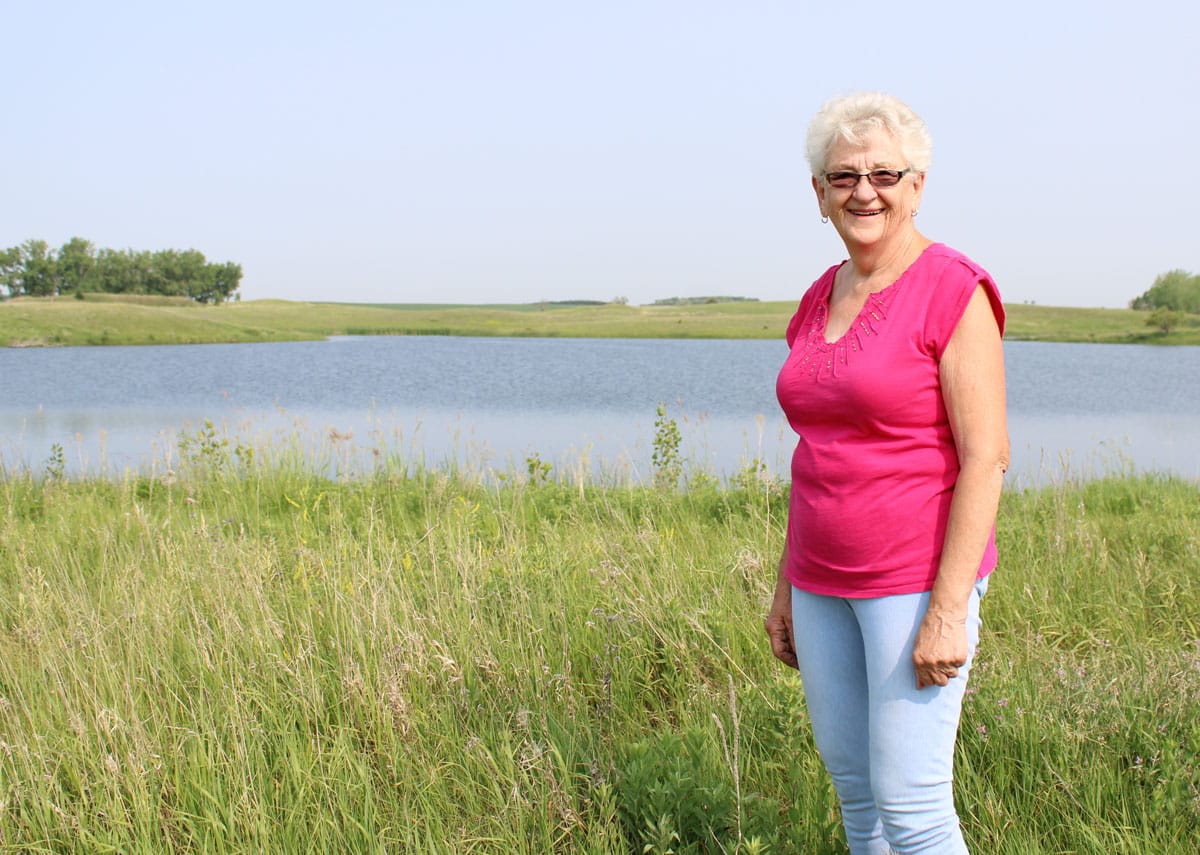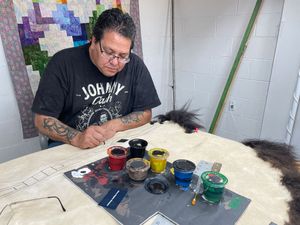HENRY, S.D. – For nearly 20 years, Carolyn Eck and her husband rented out their pastureland for cattle grazing northwest of Watertown, near Warner Lake. The land has not been tilled since before Eck moved to the property in 2003, she said.
It wasn’t until 2018, when cattle had mowed down the pasture like every other year, that Eck believed something was amiss with her land. When she looked out upon her pasture, she was devastated.
“I just thought, ‘Something isn’t right.’ It looked almost barren, starved. I don’t know the accurate way to describe it,” Eck said.
The following year, Eck enrolled 140 acres in the federal Conservation Reserve Program, which encourages landowners to protect environmentally sensitive land by not farming it.
Those enrolled in CRP enter a 10- or 15-year contract with the U.S. Department of Agriculture and receive an annual rental payment. In exchange, CRP participants plant species that create habitat for wildlife and improve the land’s overall health and quality.

Roughly four years into her contract, Eck said her CRP land has welcomed more wildlife and has acted as an educational tool on rehabilitation for farmers and environmental groups.
With a 37% decrease in the number of national CRP acres since 2007 and a continued need to preserve environmental health, landowners and several members of Congress hope to see program reforms in the next farm bill.
Payment max hasn’t changed since CRP’s first year in 1985
Under legislation that’s pending in Congress, future CRP participants could receive more than double the current payments. They also could receive more financial assistance in managing the land.
The CRP Improvement Act, which Republican Sen. John Thune of South Dakota and Democratic Sen. Amy Klobuchar of Minnesota re-introduced in January, proposes several changes:
- Raise the current annual payment limitation of $50,000, which was set in 1985 when the program started, to $125,000 to account for inflation and increasing land prices.
- Partially reimburse farmers for establishing infrastructure needed to support livestock grazing on approved CRP land, such as fences and water distribution.
- Assist landowners in paying for mid-contract management activities, which are actions that landowners undertake to disturb the land. According to the USDA, management activities mimic events like storms, grazing and fires, which support the growth and diversity of native plants by naturally disturbing the land. However, the CRP Improvement Act would not help with costs related to haying or grazing management.
- Permanently install State Acres for Wildlife Enhancement (SAFE) under Continuous CRP. SAFE is a CRP initiative in which farmers establish wetlands, grasses and trees to create habitat and food sources for threatened or endangered wildlife species. Owen Fagerhaug, South Dakota’s Farm Service Agency conservation program manager, said a limitation prevents USDA from enrolling more than 25% of a county’s eligible cropland acres in CRP. However, if the county agrees, the USDA can waive that limit to enroll land in Continuous CRP, which targets specific conservation practices, such as wetland buffers. If the bill passes, SAFE acres would also be able to bypass the county CRP acreage limit.
Currently, the CRP Improvement Act sits with the U.S. Senate’s Committee on Agriculture, Nutrition and Forestry. The bill was referred to the committee after Thune and Klobuchar re-introduced it in January.
If Congress cannot come to an agreement by the 2018 Farm Bill’s expiration, it could extend the current farm bill for several months while members decide the fate of the 2023 Farm Bill.

A conservation-centered program
South Dakota currently has the most CRP acreage it has had since the program’s inception in 1985 and is among the highest nationwide.
South Dakota had 2,104,715 acres enrolled in CRP as of May, accounting for 9.15% of total CRP acres in the U.S. The Rushmore State now has the third-largest number of CRP acres, behind Texas and Colorado, according to USDA data.
More from News Watch: Age of South Dakota farmers rise – along with land and input costs
Still, Fagerhaug said South Dakota counties are not near the 25% acreage cap.
“(CRP) is a program to help environmentally sensitive land, improve wildlife habitat, soil erosion, water quality, wind erosion and just conservation in general,” he said.
Fagerhaug said the term “environmentally sensitive” encompasses varying resource concerns that must be addressed to improve a landscape.
“That could be a buffer area around a wetland to help improve the water quality. That could be some field windbreaks or farmstead shelter belts to improve wind erosion, provide livestock shelter,” Fagerhaug said.

Pete Bauman, a South Dakota State University Extension Natural Resources Field specialist, said CRP leads to a host of environmental benefits. CRP incorporates diverse plant species that attract pollinators, which in turn attract insects that bring in baby chicks, he said.
“We can use these lands without abusing them, and we still reap the benefits of the water quality, erosion control, wildlife habitat,” Bauman said.
Impacts are bigger than just the land
CRP also encourages South Dakota to claim ownership of its downstream impact on neighboring states, Bauman said.
“If you want clean water, you don’t want it to run off a soybean field. You want it to soak into the ground. If it goes into the ground, it’s a filter. The ground becomes a filter. If (water) runs off the ground, the ground becomes a source of pollution,” said Dennis Hoyle, a third-generation Edmunds County farmer and long-time CRP landowner.
Hoyle, who has been a board member of the South Dakota Soil Health Coalition for eight years, has witnessed the difference in CRP soil firsthand.
After a heavy rainfall, he drove through his neighborhood and found sloughs filled with water that had run off the fields and into the wetlands. When he stopped by a section of his CRP land, he encountered a much different scene.
“I could have walked through that slough. I barely got my socks wet. Because (the water) stayed put. The land absorbed it,” Hoyle said.
Rehabilitation, wildlife conservation and education motivated Eck to enroll in a 15-year CRP contract.
“Along the way, there’s always something that we can learn from the land and so it’s important. I think that’s how I see it as an educational tool,” Eck said.

Conservation Reserve Program not without its critics
While many conservationists support CRP for its environmental effects, some critics say the program has several downfalls.
A 2012 research paper published by the Council on Food, Agricultural & Resource Economics, or C-FARE, notes that many of the studies on CRP’s economic impact on rural communities occurred during the first 10 years of the program.
More from News Watch: South Dakota ag income predicted to fall, but farmers remain optimistic
Several of the studies the paper lists from the 1990s found that CRP had negative impacts on rural economies.
One of the studies analyzed the “median household income, poverty and population” of 19 southwestern Minnesota counties that had 15% of their land in CRP in 1998. The report suggested that “CRP enrollment is associated with lower median household incomes and lower populations in farming-dependent counties.”
More recent concerns with CRP center around the fact that CRP takes cropland out of production. As a result, some say the program also takes away farming opportunities from young producers.
At a House Agriculture Subcommittee hearing in May, Republican U.S. Rep. Brad Finstad of Minnesota said young farmers in his state have told him that higher rental rates cause competition between the federal government and beginning farmers looking to rent land.
Research from the University of Florida says some opponents of CRP believe the program’s budget should be cut to help decrease the federal budget deficit.
South Dakota’s annual CRP rental payments totaled nearly $104 million in 2022. The national total reached $1.7 billion that year, according to the USDA.
News Watch contacted six people who may have had concerns about CRP but received only one response from someone who would not speak about it on the record.
Other CRP-focused bills proposed
With 2023’s status as a farm bill year, Midwestern legislators aren’t the only ones looking to improve CRP:
- U.S. Sens. Cory Booker, D-N.J., and Chuck Grassley, R-Iowa., introduced the CRP Reform Act in May. The legislation would ensure CRP focuses on enrolling highly-erodible land rather than highly-productive land. It would also cap the total number of CRP acres at 24 million for the 2024-2028 fiscal years, down from the 27 million acre cap of 2023.
- U.S. Reps. Kim Schrier, D-Wash., and Dan Newhouse, R-Wash., introduced the Eliminating Needless Administrative Barriers Lessening Efficiency for Conservation Act in April. The bill would ensure the permanent installment of SAFE under CRP, similar to the CRP Improvement Act.
- U.S. Sen. Marco Rubio, R-Fla., proposed the CRP Amendments Act in April, which would expand CRP to include a subprogram for the conservation of citrus agricultural land.
CRP’s beginnings: ‘There were farmers that … just quit’
CRP got its start with the Food Security Act of 1985.
Throughout the 1980s, the U.S. agriculture industry suffered a farming crisis. Many farmers fell into debt as the country experienced a suppressed farm economy, high interest rates and inflation, Bauman said.
“There were farmers that sold out, just quit. The farm crisis got its name legitimately. It was tough,” Hoyle said. “I heard of a few farmers that went around behind the barn and didn’t come back.”
Hoyle recalls buying a tractor and financing it at a 9% interest rate around 1979. A year later, the interest had risen to 19%.

“Giving up was never an option. This is all I wanted to do. When I was 3, I decided what I was going to do, and I’ve done it,” Hoyle said.
Hoping to alleviate their financial burdens, some farmers planted more crops, from fence row to fence row.
“So if you’re a producer, if you’re a farmer, the only way you think you can dig yourself out of that hole is to produce more. And it wasn’t working,” Bauman said.
In an effort to increase production, many farmers plowed and planted land that previously went unfarmed because it was lesser quality cropland.
“When you start breaking and farming what you might call marginally productive lands, you have two things going against you: you have much higher input costs to produce that crop and then you’ve got the threat of lower yield,” Bauman said.
Marginal lands are likely to include slopes and hilltops, be erosion prone or have low-land drainage, he said. The establishment of the CRP program attempted to place marginal land back under a perennial cover to reduce erosion, soil loss and overall production, Bauman said.
CRP’s introduction entices landowners
At the time of the first CRP sign-up, the program paid double what rent paid, Hoyle said.
“My dad has always been conservation minded. And he thought, ‘Okay, here’s a chance we can rest our land, be good for wildlife and get paid at a profit,’” he said.
CRP’s infancy was largely successful, as the program had more than 32 million acres enrolled by 1990. With marginally productive land and input costs higher than normal, an option to not farm that land again enticed farmers to enroll in CRP, Bauman said.
“And then I suppose the reality is the non-permanence of it. That knowing that 10 or 15 years down the road, if you really felt it was important to break that grass back out, I guess that probably appealed to some people,” Bauman said.
Nearly 38 years later, proposed legislation could ensure the program continues to support landowners and their acres.
“I don’t know that (the bill) is going to save any small town or family farm,” Hoyle said. “But CRP is good for wildlife. It’s good for the soil, good for the environment, so there’s a benefit there."






